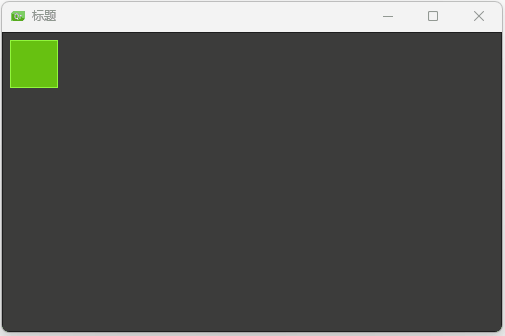输入元素
土豆 2023/8/1 qml
# ⽂本输⼊(TextInput)
示例一
import QtQuick 2.0
Window {
width: 500;
height: 300;
visible: true
title: qsTr("标题")
color: "linen"
TextInput{
id:input;
x:8;
y:8;
width: 96;
height: 20;
focus: true;
text: "Text Input 1"
}
TextInput {
id: input2
x: 8; y: 36
width: 96; height: 20
text: "Text Input 2"
}
}
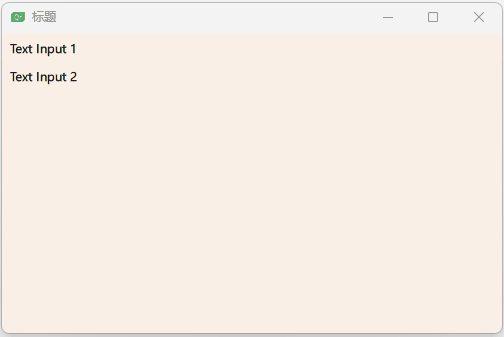
使⽤KeyNavigation(按键向导)这个附加属性来获取焦点。
按TAB键切换焦点
import QtQuick 2.0
Window {
width: 500;
height: 300;
visible: true
title: qsTr("标题")
color: "linen"
TextInput{
id:input1;
x:8;
y:8;
width: 96;
height: 20;
focus: true;
text: "Text Input 1"
KeyNavigation.tab: input2;
}
TextInput {
id: input2
x: 8; y: 36
width: 96; height: 20
text: "Text Input 2"
KeyNavigation.tab: input1;
}
}
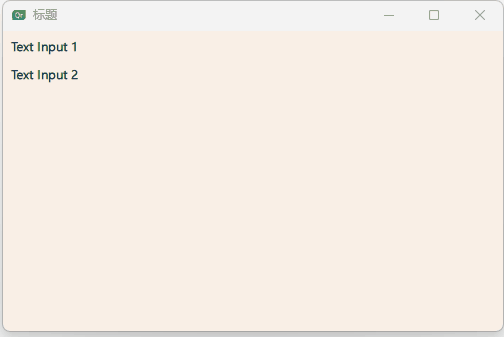
⼀个⽂本输⼊元素(text input element)只显⽰⼀个闪烁符和已经输⼊的⽂ 本。⽤户需要⼀些可⻅的修饰来鉴别这是⼀个输⼊元素,例如⼀个简单的矩 形框。当你放置⼀个TextInput(⽂本输⼊)在⼀个元素中时,你需要确保其 它的元素能够访问它导出的⼤多数属性。
// TLineEditV1.qml
import QtQuick 2.0
Rectangle {
width: 96;
height: input.height + 8;
color: "lightsteelblue";
border.color: "gray"
property alias text: input.text
property alias input: input
TextInput{
id:input;
anchors.fill: parent;
anchors.margins: 4;
focus: true;
}
}
重新table切换
import QtQuick 2.0
Window {
width: 500;
height: 300;
visible: true
title: qsTr("标题")
color: "linen"
TLineEditV1{
id:input1;
x:8;
y:8;
width: 96;
height: 20;
KeyNavigation.tab: input2;
text: "Text Input 1"
}
TLineEditV1 {
id: input2
x: 8; y: 36
width: 96; height: 20
KeyNavigation.tab: input1;
text: "Text Input 2"
}
}
TAB键切换失败,为了防⽌这个问题,QML提供了FocusScope(焦 点区域)。
# 焦点区域(FocusScope)
⼀个焦点区域(focus scope)定义了如果焦点区域接收到焦点,它的最后⼀ 个使⽤focus:true的⼦元素接收焦点,它将会把焦点传递给最后申请焦点的⼦ 元素。我们创建了第⼆个版本的TLineEdit组件,称作TLineEditV2,使⽤焦 点区域(focus scope)作为根元素。
// TLineEditV1.qml
import QtQuick 2.0
FocusScope {
width: 96;
height: input.height + 8;
Rectangle{
color: "lightsteelblue";
border.color: "gray"
anchors.fill: parent;
}
property alias text: input.text
property alias input: input
TextInput{
id:input;
anchors.fill: parent;
anchors.margins: 4;
focus: true;
}
}
TAB键切换测试
import QtQuick 2.0
Window {
width: 500;
height: 300;
visible: true
title: qsTr("标题")
color: "linen"
TLineEditV1{
id:input1;
x:8;
y:8;
width: 96;
height: 20;
// 切换到input2
KeyNavigation.tab: input2;
text: "Text Input 1"
}
TLineEditV1 {
id: input2
x: 8; y: 36
width: 96; height: 20
// 切换到input1
KeyNavigation.tab: input1;
text: "Text Input 2"
}
}
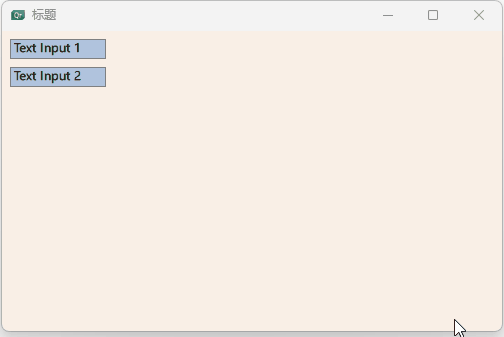
# ⽂本编辑(TextEdit)
⽂本编辑(TextEdit)元素与⽂本输⼊(TextInput)⾮常类似,它⽀持多⾏ ⽂本编辑。它不再⽀持⽂本输⼊的限。
// TTextEdit.qml
import QtQuick 2.0
FocusScope {
width: 96;
height: 96;
Rectangle{
anchors.fill: parent;
color: "lightsteelblue";
border.color: "gray";
}
property alias text: input.text;
property alias input: input
TextEdit{
id: input;
anchors.fill: parent;
anchors.margins: 4;
focus: true;
}
}
多行输入测试
import QtQuick 2.0
Window {
width: 500;
height: 300;
visible: true
title: qsTr("标题")
color: "linen"
TTextEdit{
id:input1;
x:8;
y:8;
width: 96;
height: 104;
focus: true;
text: "Text Edit"
}
}
# 按键元素(Key Element)
附加属性key允许你基于某个按键的点击来执⾏代码。例如使⽤up,down按 键来移动⼀个⽅块,left,right按键来旋转⼀个元素,plus,minus按键来缩 放⼀个元素。
import QtQuick 2.0
Window {
width: 500;
height: 300;
visible: true
title: qsTr("标题")
color: "linen"
DarkSquare{
anchors.fill: parent;
GreenSquare{
id: square;
x:8;
y:8;
}
focus: true;
// 左键
Keys.onLeftPressed: square.x -= 8;
Keys.onRightPressed: square.x += 8;
Keys.onUpPressed: square.y -= 8;
Keys.onDownPressed: square.y += 8;
Keys.onPressed: {
switch(event.key){
case Qt.Key_Plus:
square.scale += 0.2;
break;
case Qt.Key_Minus:
square.scale -= 0.2;
break;
}
}
}
}
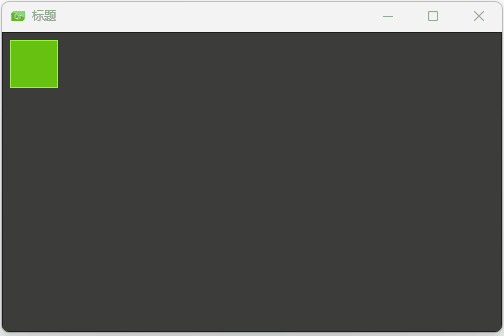
示例二
import QtQuick 2.0
Window {
width: 500;
height: 300;
visible: true
title: qsTr("标题")
color: "linen"
DarkSquare{
anchors.fill: parent;
GreenSquare{
id: square;
x:8;
y:8;
}
focus: true;
// 左键
Keys.onLeftPressed: {
square.x -= 8;
text.text = "Left"
}
Keys.onRightPressed: {
square.x += 8;
text.text = "Right"
}
Keys.onUpPressed: {
square.y -= 8;
text.text = "Up"
}
Keys.onDownPressed: {
square.y += 8;
text.text = "Down"
}
Keys.onPressed: {
switch(event.key){
case Qt.Key_Plus:
square.scale += 0.2;
text.text = "+"
break;
case Qt.Key_Minus:
square.scale -= 0.2;
text.text = "-"
break;
}
}
Text{
id:text;
anchors.right: parent.right;
anchors.bottom: parent.bottom;
anchors.margins: 10;
color: "#fff";
font.pixelSize: 30;
}
}
}
